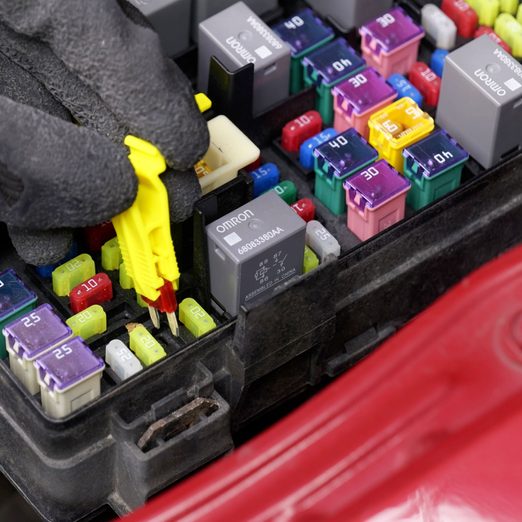How to Check and Replace Car Fuses
Updated: Mar. 25, 2024
Solve electrical problems yourself by simply replacing a car fuse. We'll show you how to check car fuses, how to replace a car fuse and more here.
An hour or less
Beginner
Less than $20
Introduction
Cars run on electricity as well as gas, and almost all of it runs through fuses. Learn where they are, how to spot a blown fuse, and how to replace them. It takes about five minutes, costs about $1, and it'll save you the hassle of a trip to the repair shop.
Tools Required
- Fuse puller
Materials Required
- Replacement fuses
Cars run on electricity as well as gas, and almost all of it runs through fuses. Eventually, those fuses blow and need to be replaced. Know that next time your car radio, windshield wipers or other device stops working, chances are a blown fuse is the culprit. The good news is that checking and replacing a car fuse is simple enough for any DIYer to take on the project and save time and money.
Car fuses are color-coded by amp rating. For example, a standard blue fuse has a 15-amp rating, while yellow is 20 amps and green is 30. Before buying and replacing car fuses, remember that the fuse panel cover often contains spare fuses and even a fuse puller. If you do use those spares, be sure to replace them. You can buy car fuses at any auto parts store and at well-stocked service stations. The location of a vehicle’s fuse panel varies, so refer to your owner’s manual to locate yours. Some standard locations for fuse boxes include under the dash, beneath the sidekick panels and under the rear seat.
A professional car mechanic is not required to replace a car fuse; however, if your new fuse blows soon after installing it, you might have problems with that circuit. Schedule an appointment with your service station or dealer for an expert diagnosis to repair the problem.
Project step-by-step (8)
Turn off the vehicle
Shut off the vehicle by turning off the ignition.
Locate the car fuse panel
Check your owner’s manual to locate your fuse panel. Once located, remove the cover and look for a fuse diagram.
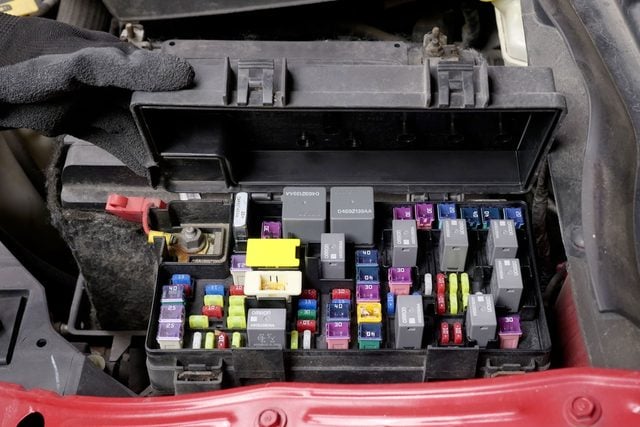
Analyze the fuse diagram
Each fuse panel cover should have a diagram listing each device and the corresponding fuse. The diagram will make it easy to find which fuse needs to be replaced to fix the electrical issue.
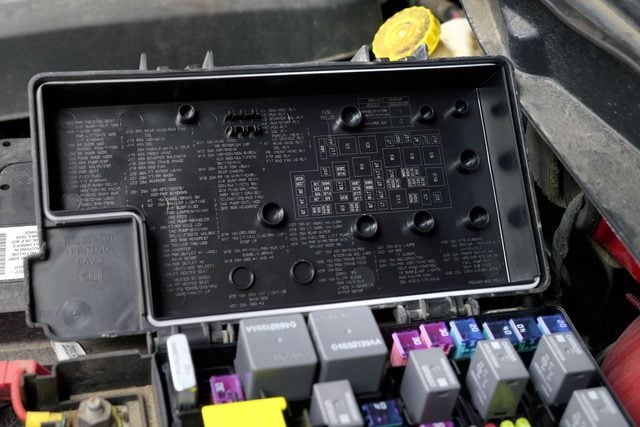
Remove the blown fuse
With the fuse puller, remove the blown fuse from the panel. Tweezers, needle nose pliers, or your fingers would also work to pull out the fuse. If you have larger hands, it will be easier to use fuse pullers.
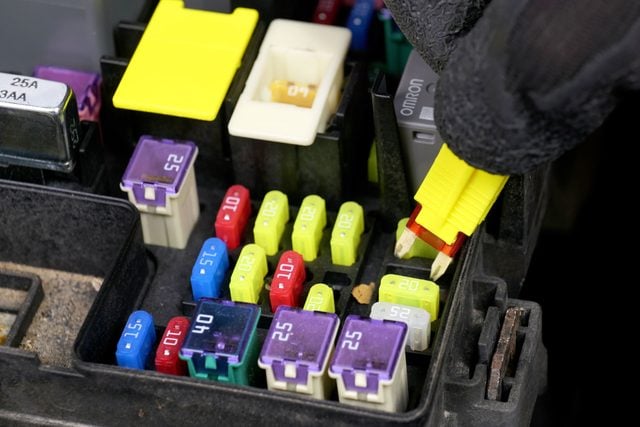
How to chack if a car fuse is blown
To confirm a fuse is blown, hold it up to the light to see if it’s burned out. If the fuse is good, you’ll see a fine wire element connecting the two sides. The fuse is bad if a section of that wire has burned away.
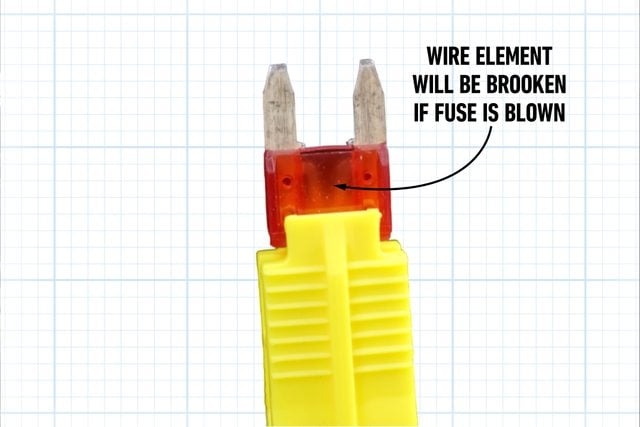
Replace the fuse
Replace the blown fuse with a new fuse that has identical amperage, identified by the color and number printed on the fuse. Use the fuse pullers to insert a new fuse into the fuse panel.
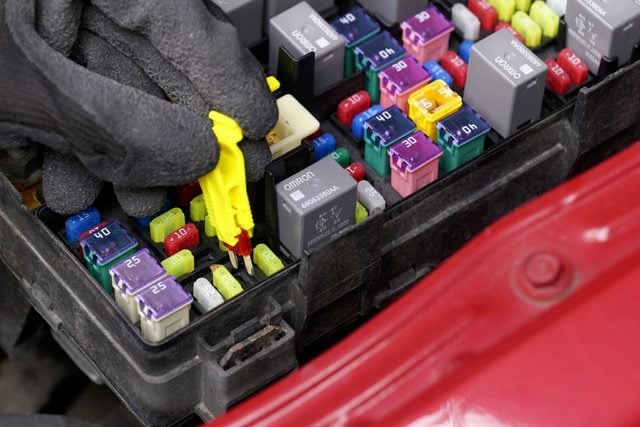
Test the new fuse
Turn the vehicle back on. Turn on the electrical circuit that corresponds to the replaced fuse. If it works, you are good to go. If the new fuse blows immediately, you know an underlying issue (like a short circuit) needs to be inspected by a professional mechanic.
FAQs
How do you know if a car fuse is blown?
Common signs that a fuse in your car is blown are electrical functions not working, including interior or exterior lighting systems, power outlets, power windows, power door locks, or the radio.
Can you replace a blown fuse with a lower AMP fuse?
Always replace the fuse with one with the specified amp rating. You may install the next-smaller-rated fuse to get you by in a pinch until you can purchase a replacement. However, you should never replace a blown fuse with a higher-amp fuse.
What are common types of car fuses?
There are at least seven different styles of fuses. You’ll need the blown fuse to match it up with the right replacement. Most automobile fuses used in vehicles today are one of three types: mini, standard, or maxi. The mini and standard are fast-acting fuses that protect most of your vehicle’s circuits, including those for lights and radios. The maxi car fuses are slow-acting fuses that protect circuits with a large current draw, such as those for anti-lock brakes, the rear window defogger and traction control.

